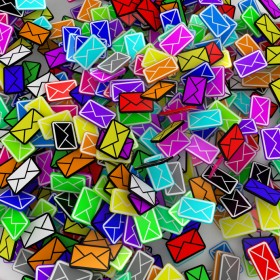 The English language is complicated enough for those who did not learn Latin at school. Spell and grammar checkers are hailed as tools of the digital age which should make our lives easier. However, they are useless at picking up on the errors generated by using Homonyms. These are words which sound the same but are spelt differently. Here are some examples.
The English language is complicated enough for those who did not learn Latin at school. Spell and grammar checkers are hailed as tools of the digital age which should make our lives easier. However, they are useless at picking up on the errors generated by using Homonyms. These are words which sound the same but are spelt differently. Here are some examples.
How often have you said you will arrange a meeting in mourning (for whom) when naturally you mean the morning? Certainly as one who struggles with mild dyslexia I have made many errors despite emails being be read on screen and paper and spell checked.
As if this is not enough, there are the Homophones, those words which sound and are spelt the same but have different meanings. These are so well illustrated by Lynne Truss’s book ‘ Eats Shoots and Leaves’. Surely a must for anyone who is either a grammar pedant or cares about their email etiquette. One of my favourite Homophones is ‘Rose’. For example:
Are we planting a rose before our partner rose from bed because they drank too much rose coloured wine last night?
There have been several articles recently about the importance of grammar in business and some have suggested that better grammar is linked to how high you climb the corporate greasy pole.
What is clear from Mesmo Consultancy’s studies is that grammatically correct emails help reduce email overload because they convey the right message right first time. Additionally, good email etiquette as in good grammar conveys a professional image and most importantly make it easy for the recipient to know what is being asked of them.
Next time before hitting send, pause, take the slow email approach and re-read before hitting send. Make sure the human touch pervades over the arrogance of the spell checker.
This is an edited extract from my new book Taking Control of Your Inbox due out in late November. Watch this space for more news.
Tags: Dr Monica E. Seeley, email etiquette, email overload, Executive Secretary, Grammar, Lynne Truss, Mesmo Consultancy, Slow email, Taking Control of Your Inbox
Michael Einstein of Email Overload Solutions recently wrote about listening properly before replying. For us at Mesmo Consultancy this so resonated with all we say about think before hitting send we wanted to share it with you (and for which he gave us permission).
Listening is a critical part of communication. It is an activity many people take for granted yet perform quite poorly. Active listening can help greatly improve your communication with others.
It is very easy to “hear” but can be very difficult to actually “listen”. Have you ever found yourself planning a response to someone before they even finished speaking?
Has listening just become a game of waiting for the time for when someone stops speaking so that you can start talking yourself? This is where active listening can be improve your communication abilities. Stephen R. Covey, author of “The 7 Habits of Highly Effective People: Powerful Lessons in Personal Change”, wisely said:
“Most people do not listen with the intent to understand; they listen with the intent to reply”.
How many time have you hit send before you have really read and thought through what the sender is saying? Here are Mesmo Consultancy’s top five tips to improve your email listening and communication skills.

Email listening
Click here to check your personal email etiquette. For more help on listening well to improve business email communications contact us about our Brilliant Email workshops and masterclasses.
Tags: Business email communications, email communications, email etiquette, Listening, Michael Einstein, Quiet Email, Quite email, Slow email
Is email yesterday’s technology and will email overload soon be a thing of the past? Maybe for Generation K – teenagers. However, four recent studies on email overload and email traffic suggest that this is definitely not the case see below.

Email overload
1. Email alert: full inboxes leave staff exhausted. Professor Cary Cooper pronounced that email is sapping the life out of the British workforce. It is one reason why British productivity is the lowest in the G7 group. Germany and France are taking action to reduce the email overload malaise, but few UK based companies are doing anything. Sir Cary says ‘companies need to take drastic action’.
2. Here are some of the findings from a fascinating new study of the email behaviour of over 2 million users by a group of researchers at Yahoo and the University of Southern California.
2. The overall volume of emails sent and received is predicted to grow by 3% year on year between 2015 and 2019 according to the Radicati Groups latest email statistics report. This may be a small increase but nonetheless it is still up rather than down.
3. Pointless emails are common. A study focused on British email users (by Sennheiser) found that of 2,000 business users one third felt there was always someone in their team who sent pointless emails (eg the photo copier is broken) when an alternative more effective method could be used. 38% confessed to sending an email which started an email war and 25% said they used email instead of talking because they were emailing about a person sitting close by!
Even if you only receive half the number of emails identified in these studies that is 50 per day and 10,000+ per year. If you are a manger the volume will be higher and the email overload more pronounced.
There are important lessons to be drawn from these studies, not least about email etiquette, the risk of missing important emails as email traffic increases and the impact of email overload on business and personal productivity and finding key emails when needed to support your reason for actions taken.
Simply banning email is not a solution as the Grossman Group pointed out. The solution is to change the email culture and enable people to use email more responsibility. Know when to stop an email chain and talk, no reply is required, etc.
These are challenges which Mesmo Consultancy regularly addresses in its email management training webinars, workshops and one-to-one coaching. If these are issues you face then why not call us now to hear how we have helped other clients like you?
Tags: Cary Cooper, email etiquette, email management training, email overload, Generation K, Generation X, Generation Y, Mesmo Consultancy, Millenials, Radicati Group, Sennheiser, The Grossman Group, University of Southern California, Yahoo
January into February are often lean months for good news stories outside of real major world events. From a technology standpoint, three threads really stood out, security, email etiquette and the effect of mobile devices on our wellbeing. In the light of the Sony hacking offensive the emphasis on cyber crine and email etiquette is not surprising. Here are our top five articles and blogs of note.

Articles of note
If email security, email etiquette or the impact of email overload on well being are on your agenda for 2015, why not contact Mesmo Consultancy now for a free consultation? Either call us on +44 (0)1202 434340 or email us.
Tags: Articles of note, cyber crime, email etiquette, email overload, email security, Sony hacking, well being

To or Cc
When sending an email, the action you want from the recipient(s) dictates which address box you put their name.
‘To’ is for action. You expect an action from those whose name is in that line. If there are multiple people in the To box be sure to spell out who is expected to take action (when and how).
‘Cc’ is for information only. It implies that no reply is either expected or necessary. Good email etiquette dictates that if you are in the Cc line and feel you must voice your opinion, only reply to the sender.
Tags: Cc address line, cc'd email, email etiquette, To address line